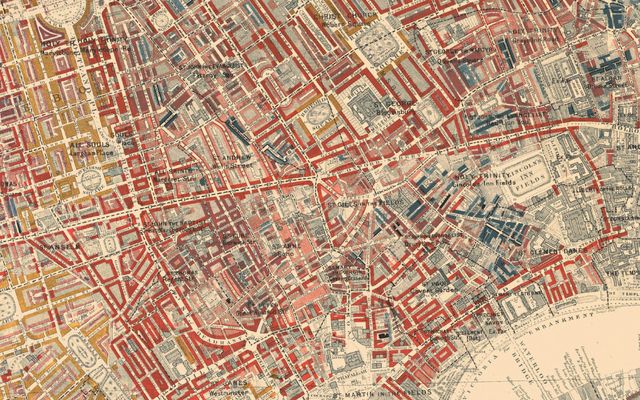How to See the Liberty Bell...in Queens
A copy of the famous American bell can be found inside a bank, which itself is modeled after Independence Hall!



Welcome back to the Untapped Cities partnership with Gehl Institute in Copenhagen, looking at the impact of data, both open and collected, in the design of cities. In their first exploration of this topic, the Gehl Institute team looks back in time to the work of philanthropist and social researcher, Charles Booth, in London.
Seeing is believing
In 1889 in London the philanthropist and social researcher Charles Booth, frustrated by the lack of data on the city’s changing demography and in particular on the city’s poor, set out to complete an extensive study of the people and places of the industrial city. Claimed to be a more lively and accurate portrait of London than even Dickens’ novels, his mixture of ethnographic, observational and spatial data filled many volumes and was expressed as a colour-coded, beautifully intricate map. This displayed the inequalities that went to form the ubiquitous paradox of the urban industrial society: ‘poverty in a land of plenty’.
 With permission of the Charles Booth Archive at the Library of the London School of Economics
With permission of the Charles Booth Archive at the Library of the London School of Economics
Booth’s social survey caused a significant discursive shift — it served to dispel the myth that poverty was the punishment for idleness and immorality; that poverty was due to the failings of the poor themselves rather than society or the poor conditions of the city itself. Booth produced data which showed that 30% of the population lived in poverty caused by low pay, old age, sickness disability and unemployment — and that unemployment was in fact a spatial issue. This led to the urban malaise being treated as a spatial problem as well as an individual one. Areas of low-employment needed targeted injections of jobs, and so began the place based nature of urban regeneration and policy. The work proved to be revolutionary in the scientific spatial representation of society — social cartography or mapping began to interrogate the correlations between urban conditions and social phenomena. Journalistic accounts at the time reported poverty, and the places in which it was endemic – Dickens’ serialised and widely distributed novels dramatized the issues – but picturesque narrations do little for the legislator. Social-scientific presentations, on the other hand, were more adept at forcing institutional responses. City managers ‘manage what they can measure’. This was — and still is – the bureaucrat’s remit, and this data gave the visibility necessary to spur change. Booth and Rowntree (who conducted a social study of poverty in York) are cited in the reform of the poor law and their data is said to have inspired the Liberal government of 1906 to embark on their extensive welfare reform programme. The programme explicitly targeted children, the sick, the elderly and the un-employed and is the basis of the modern-day welfare system.
Read more from this article on the Gehl Institute blog, Making Cities for People.
Gehl Institute Bloggers are Simon Goddard, Claire Mookerjee, Jo Posselt and Jeff Risom.
Subscribe to our newsletter